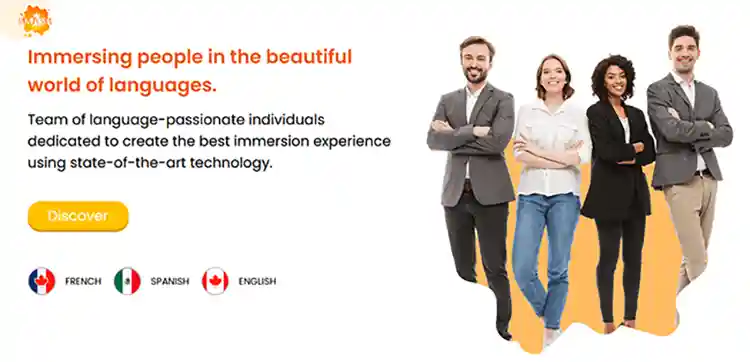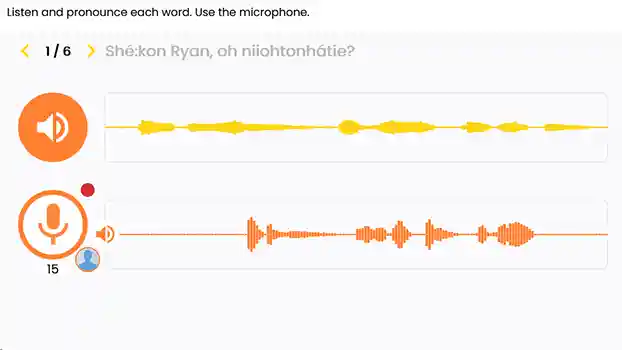What Are Languages 4? Blog
Harnessing Speech Recognition for Language Revitalization: A Key Element in Languages 4 Projects
August 30th, 2024
Harnessing Speech Recognition for Language Revitalization: A Key Element in Languages 4 Projects
At Languages 4, we aim to partner with Indigenous communities in reclaiming and revitalizing their ancestral languages. By integrating cutting-edge technology with culturally sensitive methodologies, we strive to preserve these languages while fostering a deep connection to cultural heritage. One of the most impactful tools we've embraced in these efforts is speech recognition technology, which plays a vital role in building confident speakers and enhancing language learning experiences. In this article, I want to share how we use speech recognition across various activities in Languages 4 projects and how it aligns with our language sovereignty and cultural preservation values.
My Personal Perspective: Embracing Speech Recognition in Language Learning
My introduction to the value of speech recognition technology began with my early experiences as an English language teacher. Teaching English to predominantly Japanese students, I was significantly impacted by the significant challenges they faced with pronunciation, particularly with sounds that do not exist in their native language, such as the English "R" and "L." These pronunciation difficulties often led to broader issues in language production, resulting in low communicative success and diminished confidence across ages and proficiency levels.
As a live instructor, I used various strategies to help students develop the physical skills needed for correct pronunciation. However, these methods were often tedious and could be discouraging for students. This experience sparked my interest in finding technological solutions supporting pronunciation learning more engagingly and effectively.
I got my first look at technology-assisted language learning two decades ago when I entered the Edu-tech space. Working with Auralog (and later Rosetta Stone), a speech recognition pioneer in language technology, I saw firsthand how integrating this technology into language learning could benefit learners across all levels of education and into the professional space. It became clear that speech recognition could help learners improve their pronunciation and speaking skills—especially important for Indigenous language revitalization projects, where confident speaking is crucial for preserving and promoting languages.
Core Values Alignment: Speech Recognition and Language Sovereignty
At Languages 4, using speech recognition technology is not just about incorporating new tools; it is a crucial part of our commitment to language sovereignty and cultural preservation. Building confident speakers of Indigenous languages is at the heart of our mission, and integrating speech recognition helps us achieve this goal by providing learners with opportunities to speak often and in different ways and feedback to support the development of good habits.
For example, our "Read Aloud" activity incorporates Indigenous storytelling, allowing learners to engage with authentic cultural texts and enhance their connection to the language and its context. Using speech recognition, learners receive real-time feedback on their pronunciation, helping them improve their speaking skills while immersing themselves in their cultural heritage.
Partnership with SMASH Education: A Collaborative Approach to Language Learning
To deliver these excellent tools, we have partnered with SMASH Education. This Edu-tech company has spent more than 15 years developing the technology and platform to support the goals of Languages 4. We chose SMASH Education as our partner because of their dedication to language education and similar vision and mission, albeit primarily focused on more commonly taught languages like English, Spanish, and French. This partnership has been instrumental in enabling us to leverage advanced speech recognition technology to benefit Indigenous language learners in a meaningful and impactful way.

Pedagogical Approach: Scaffolded Immersion and the Communicative Approach
Scaffolded Immersion, a fundamental part of the educational approach, is designed to introduce new language skills gradually, guiding learners through activities that help them assimilate, practice, and ultimately work towards the mastery of the language. Speech recognition technology plays a vital role in this process by adding sensory elements to the learning progression, supporting learners who prefer different instructional styles and modes, and improving productive skills beyond reading and listening.
The communicative approach further enhances this methodology by placing students in real-world situations and conversations. With speech recognition technology, the platform can actively participate in simulated conversations, providing dynamic feedback and enabling learners to practice speaking in a safe and controlled environment. This combination of Scaffolded Immersion and the Communicative Approach ensures that learners can develop their speaking skills and confidence in a comprehensive and supportive way.
Activity Examination: Leveraging Speech Recognition for Language Mastery
We utilize speech recognition technology across various activities, each designed to contribute to the overall language learning journey:

Technological Impact: Evidence of Effectiveness
The impact of using advanced speech recognition technology on learners' experiences has been profound. Studies, such as those published in Frontiers in Psychology (1), have demonstrated that learners using speech recognition technology enhanced curricula significantly outperform those without, in areas of pronunciation, accentedness, comprehensibility, and overall speaking skills. The qualitative feedback from learners also highlights the benefits of this technology, with many expressing that it has dramatically enhanced their pronunciation and speaking abilities.
ltimately, this study and others like it suggest that students benefit greatly when their language learning includes pronunciation practice enhanced by speech recognition. Technology enhances accent reduction, more natural fluency, and other speaking skills, and this is even more important in communities with few or no live speaking opportunities.
Challenges and Solutions: Overcoming Barriers to Implementation
Implementing speech recognition technology in language revitalization projects has been challenging. Initially, the primary barrier was accessibility due to limited internet capacity and the lack of connectivity. However, these challenges have lessened as internet infrastructure has improved and mobile access has become more widespread. Today, platforms like those developed by SMASH Education provide robust support for speech recognition activities, ensuring that technology is accessible to learners in even the most remote areas.
Ensuring cultural sensitivity and respect in these projects is also paramount and can only be achieved through trustworthy partnerships with Indigenous communities, a core fundamental of Languages 4. By working closely with community members, we ensure that our activities' stories, language, and cultural elements come directly from the communities.
Broader Impacts: Beyond Language Learning
Beyond language acquisition, the efficient and diverse integration of speech recognition in Languages 4 projects has led to several broader benefits. One of the most significant has been increased confidence among learners, which naturally leads to greater cultural pride. This pride in one's culture and language is essential for the success of language revitalization efforts. Moreover, speech recognition activities' interactive and engaging nature has fostered community engagement and facilitated intergenerational communication, further strengthening cultural connections.
The successful preservation of language is tied deeply to preserving cultural identity, a sentiment echoed globally. In Australia, for instance, the revival of Aboriginal languages is seen as an educational endeavor and a critical effort to maintain cultural heritage and identity (2). The more successful and widespread the revitalization of languages across Australia, the more successful and long lasting the cultural renaissance will continue.
Conclusion
Integrating speech recognition technology in Languages 4 projects is more than a technical innovation; it is a powerful tool for empowering Indigenous communities to reclaim and revitalize their languages. By developing confident speakers and fostering cultural pride, we are helping to ensure these languages continue to thrive for generations. At Languages 4, we remain committed to supporting Indigenous communities in their language revitalization efforts. We look forward to continuing this vital work together.
References:
Sun W. The impact of automatic speech recognition technology on second language pronunciation and speaking skills of EFL learners: a mixed methods investigation. Front Psychol. 2023;14:1210187. Published 2023 Aug 16. doi:10.3389/fpsyg.2023.1210187
Innovative Language Policy: Paving the Way for Indigenous Australian Linguistic Revival - FATSIL.
Connect With Us
Follow our journey, share your thoughts, and participate in the conversation. Let's keep languages vibrant together.
Languages 4™ is more than a tool; it's a partner in the mission of preserving and revitalizing Indigenous languages. We invite reach out to us explore how our platform can support your language teaching goals. [Join the Conversation 📩 Subscribe to our Newsletter ] and take a step towards sustaining the rich heritage of Indigenous languages.

Tim O'Hagan
Founder and President, Languages 4®
Ready to embark on this transformative linguistic journey? Dive in and experience the confluence of tradition and innovation as we reimagine the future of Indigenous language learning.
[Join the Conversation to Subscribe to our Newsletter ]
